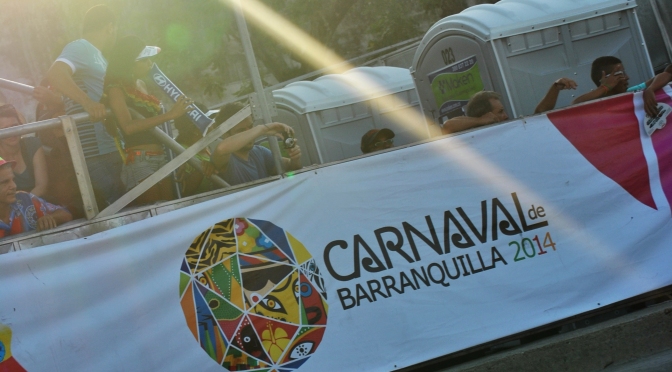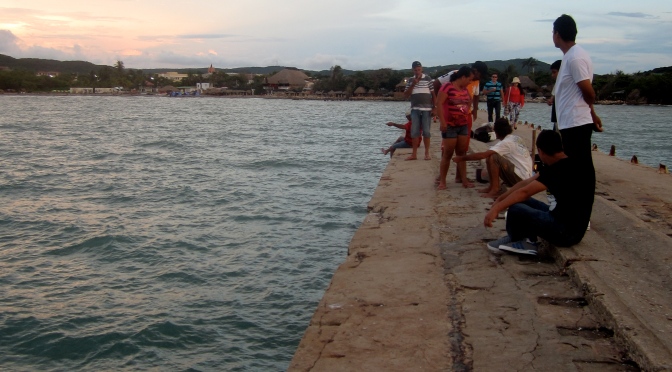It would be impossible to condense the endless stories and embody the full excitement of Carnavales in a simple blog post, but here are a few vignettes to try!
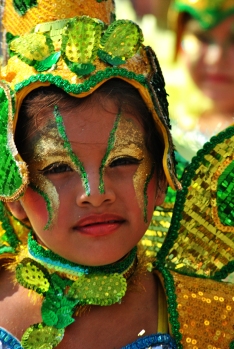
Background of Carnaval Barranquilla’s Carnaval is the world’s second-largest carnival, and the most traditional. The annual four-day festival showcases the Colombian coast’s rich blend of European, African and indigenous cultures through traditional costumes, folk dances and music. The event displays the history and culture of the coast, as well, including the Carnaval king and queen, various characters based on local history and local music.
If you live on the coast, however, Carnaval began long before March–in my town, it seemed that people were in a rush to get Christmas over with so they could focus on carnavales.
“Navidad is big, but Carnaval is bigger,” they promised me.
Beginning in January, it seemed that carnaval was suddenly everywhere. You know how stores seem to put out their Valentine’s Day stuff the day after Christmas? I am pretty sure I woke up on December 26 to carnaval music and neon colors everywhere–the carnaval theme seems to be general disorder, so the more colors and textures, the better! Throw in a can of shaving cream and a box of corn starch to cause further mayhem, and you’ve got yourself a fiesta!
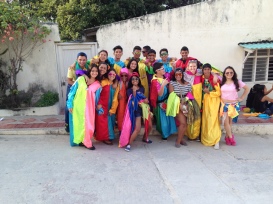
Soon, carnaval took over a prominent place in every conversation, television commercial (look for me!) and class schedule. We didn’t have class on Friday for almost two months because each week there was an event–a parade, a cultural dance contest or a coronation to attend! Walking down the street, a moto would pass, carrying a teenage girl clutching a plastic bag bursting with tulle and sequins–there goes a reina, a queen! On Friday afternoons, the street music would be pumped up, and groups of kids wearing monocuco outfits would run around town,chasing each other around with shaving cream and lining up for the parades. If you’re a monocuco in a parade, your job is to be as energetic and ridiculous as possible–and to dance serrucho, the song of the year, on repeat (on average, 12 times per parade. At least.)
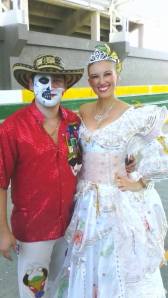
My school asked me to be the international reina, or queen, which gave me a front row seat to understand the significance of the history, traditions and effort behind carnaval. As a reina, I was expected to learn the traditional dances, pose for endless pictures and most of all, with my rey momo (king), animar el publico, or rouse up the crowd! Thankfully, my rey momo, a chemistry professor at our school, was great at getting the crowd energized and choosing the perfect moments to toss his hat into the crowd or pull a professor onto the dance floor for a quick jig. I just had to blow a few kisses and stumble around in high heels!
I’m writing a separate blog entry about the queenship and its adventures, but suffice it to say that as a reina, I had an in-depth view of my first Carnaval and the work and fun involved.
Each week, the fiestas got more elaborate and my students’ attention spans got shorter. Here in the pueblo, there were events every weekend, and Barranquilla had various parades and parties, too. It was hard to pick and choose, but the mantra was, “there’s always another!”
My school held a foro, or forum, of the traditional dances. I was blown away—the bright colors! The pulsing cumbia drumbeats! The flushed dancers with glowing eyes! The elegant dresses! The flashy makeup!
The creativity! The talent! The culture!
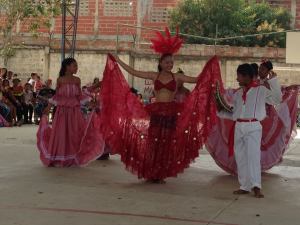
If there’s any takeaway from Carnaval, it is that Colombians are born with dance and music in their blood. I saw first graders moving their hips like I have never done in my 23 years (nor will accomplish in the next 23!) I watched cumbia players fall into intricate rhythms and play their instruments with their whole bodies, swaying and tapping the beat.
I watched the entire town go into carnaval-mode, with seamstresses, door-to-door souvenir saleswomen, dance instructors and queens coming out of the woodwork. In true small town fashion, there’s a guy for everything: need a shoe fixed? The guy at the corner does that. Need to borrow a headpiece? The lady across the way rents them. Need a seam mended on your sequin bodice? So-and-so’s aunt does that. Need a crash course in dancing? Here’s last year’s dance winner.
Parade after parade, event after event, we danced, serrucho-ed, cheered, photographed and celebrated towards the culmination: Caraval weekend, March 1-4, 2014. The long-anticipated weekend, attracting tourists and professional pickpocketers from around the globe. Suddenly, arepa prices skyrocketed, the streets started filling with tall, Raybans-sporting pale people, and the carnaval music got even louder.
In rickety buses, overcrowded airplanes, air-conditioned shuttles and little taxis, the world converged on Barranquilla with juicy anticipation, ready to gozar the event of the year.
And that brings us to Friday night of Carnaval.
to be continued…
